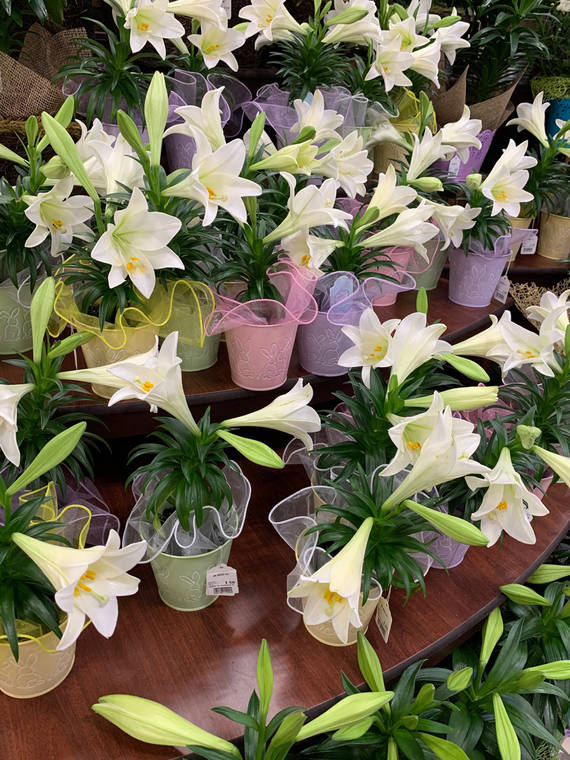Easter reminds us that life is a cycle of what appears to be death and rebirth. In cooler climates, it is what we learn by observing plants that go dormant in the winter only to sprout anew in the spring. Bulbs are examples.
Many types of bulbs are popular this time of year, but the Easter lily is by far the most popular.
The lily did not really become part of our modern tradition until the early 20th century when World War 1 soldier Louis Houghton brought what was then called the Bermuda lily to southern Oregon. Commercial flower growers began to grow and promote them for the holiday.
The lesson taught by the Easter lily is that it will soon begin to fade after we celebrate the holiday only to come back to life next season. So instead of throwing that fading plant away this year, why not attempt to make it bloom for next Easter and each year thereafter.
Easter lily, Lilium longiflorum, bulbs consist of scales growing from a core. When exposed to the air too long, scales lose their moisture and shrivel. Once they become dehydrated, the bulb is gone.
You can store them for a short period if you keep them cool and put them in a moist medium such as sponge rock or peat. However, it is better to replant the bulbs right after digging them up, cleaning them and looking for signs of disease such as basal rot.
Recondition the soil where the bulbs are to go. It should be rich in humus, which contains the helpful microorganisms. A well-balanced slow release plant food should be added and mixed with the soil.
The depth at which you plant a bulb depends upon its size. The rule of thumb is two times the diameter. Amaryllis is an exception, though. If planted in the ground, the top of the bulb should be just under the soil surface. In a pot, almost half of the amaryllis bulb should be sticking up above the soil.
Growers usually favor an inorganic bulb fertilizer high in potash. Some say organic fertilizers such as dried blood, tankage and cottonseed meal stimulate Fusarium fungus that causes basal rot. However, fish emulsions used in diluted form seem to cause no ill effects. These give excellent results in foliage color and growth, as well as flower development and bulb size.
A complete fertilizer is important for success. This should be applied two or three times during the growing season to keep the bulbs vigorous for next year’s growth.
Mulching is recommended to keep soil from drying, whether in the ground or a pot.
If you want to grow Easter lilies in pots, line the bottom of the pot with an inch of gravel or cinder and fill it half full of soil. Place the bulb at the right depth for its size and then add soil mixture to within about an inch of the rim. Naturally, the larger the bulb, the larger the size of the pot. Remember, lilies are heavy feeders.
The bulbs require plenty of sun, as do almost all bulbs. Locate the plants in a sunny location until at least mid-afternoon. Sunset’s New Western Garden Book gives details for many other bulbs.
If you want to keep your bulbs from year to year, remember not to remove any part of the stem until it has dried.
The real secret to getting the plants to bloom right on time is to give the resting bulbs a 5-6 week “chill” in the refrigerator at 35-45 degrees. After chilling, the bulbs are potted so they have approximately 120 days until flowering. The timing won’t be exact because of variables such as temperature and bulb variety.
For guaranteed success, try some of the easier types such as amaryllis. These bulbs must have a little lime or crushed coral in the soil in which they are grown. They do well in either ground or pots.
Very few bulbs can stand deep shade. Most require plenty of sun to induce flowering. They will grow but seldom flower when planted in shade. An exception to this would be Calla lilies and Clivia.
For more information about bulb gardening, contact the UH Master Gardeners at 322-4893 in Kona or 981-5199 in Hilo.



